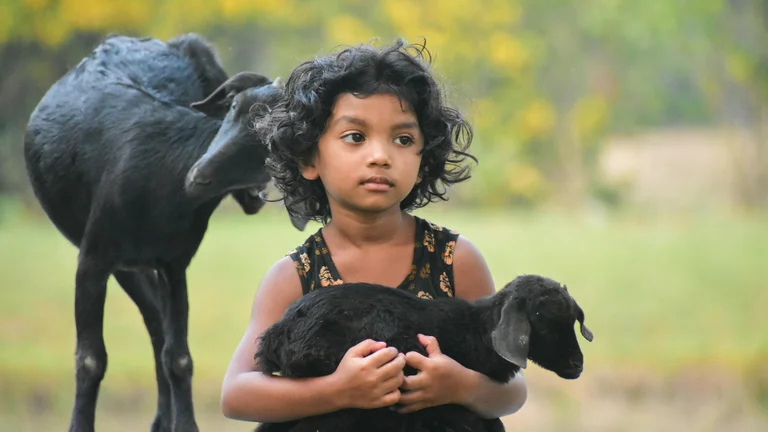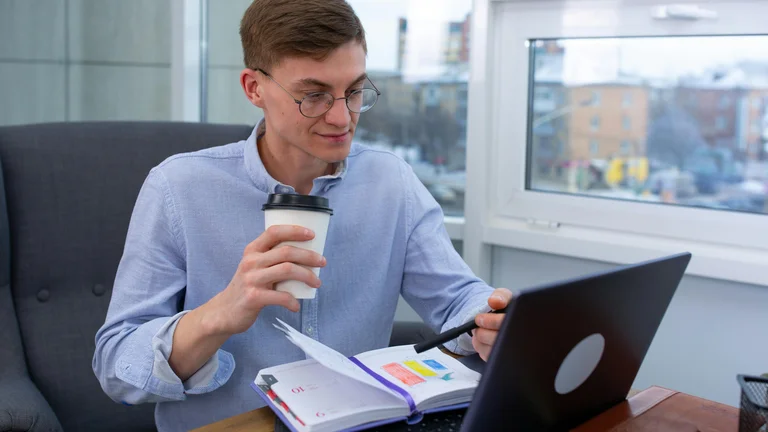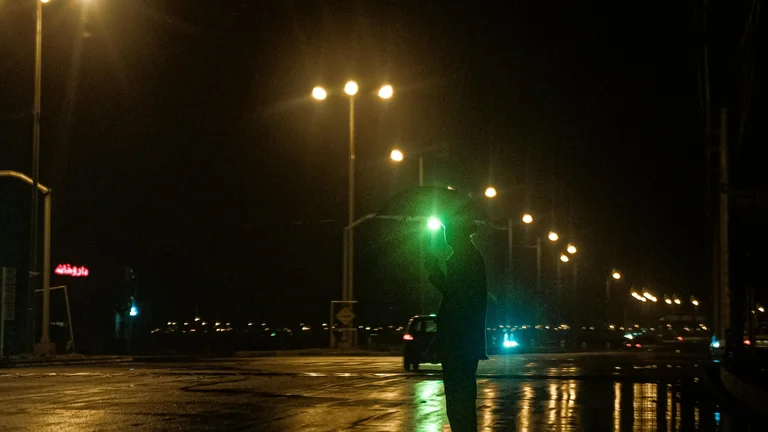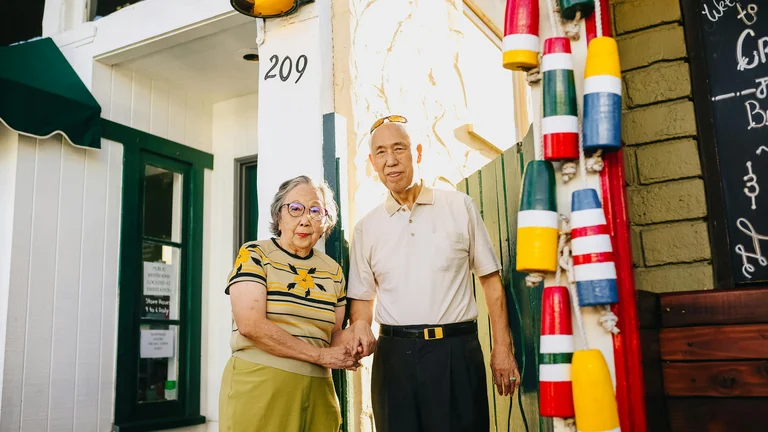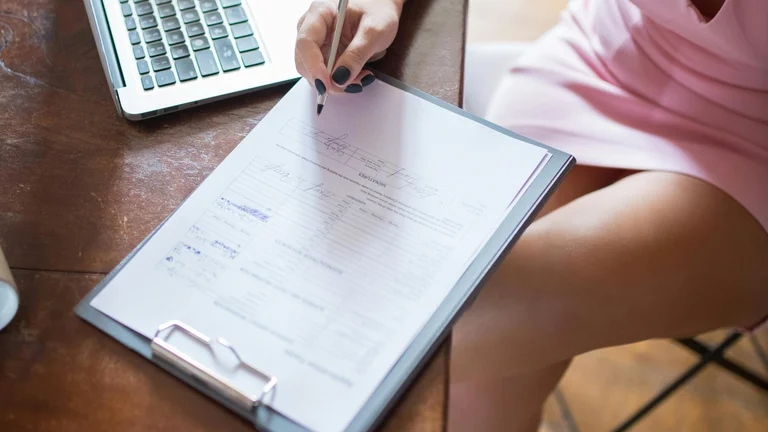Distinctive Styling That Defines K-Drama Characters
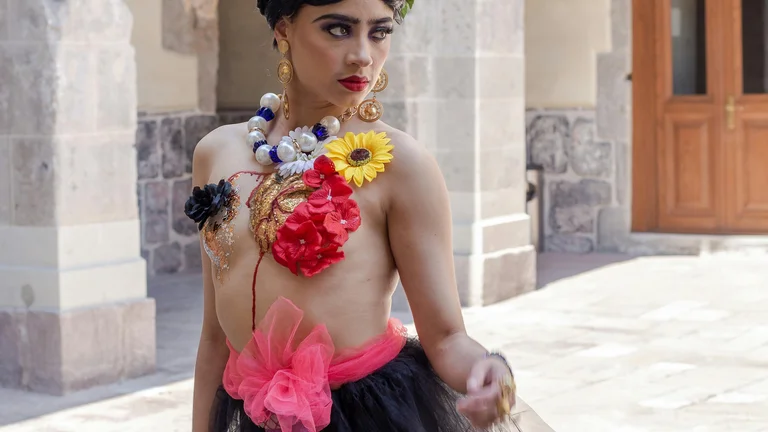
Korean dramas have long captivated global audiences not only by their intricate plots and emotional narratives but also by their distinctive visual storytelling, most notably through fashion. The wardrobes chosen for each character go far beyond mere aesthetics; they serve to communicate personality traits, social status, emotional states, and even foreshadow narrative arcs. Among these, quirky fashion moments emerge as memorable highlights that deviate from conventional styling, presenting eccentric, bold, or playfully unusual outfits that add significant texture and dimension to the storytelling. These fashion elements have become a staple for K-dramas, making them not just entertainment but visual feasts that inspire audiences worldwide.
One of the foundational aspects of quirky K-Drama fashion is its ability to blend traditional Korean elements with contemporary or avant-garde aesthetics. Designers and stylists often inject unexpected colors, unusual layering techniques, or exaggerated accessories to challenge viewer perceptions. These unconventional choices create an immediate visual impact, sometimes elevating minor characters into cult favorites because of their unique looks. Such styling decisions also reflect the changing nature of Korean pop culture itself, where individuality and experimental fashion are increasingly celebrated.
Characters’ outfits in these dramas often incorporate thematic motifs aligned with the plot. For example, a protagonist battling inner turmoil might appear in mismatched or deliberately clashing ensembles, symbolizing chaos beneath a composed exterior. Conversely, another character might adopt vintage-inspired looks peppered with eccentric details as a symbol of defying societal norms. This purposeful use of odd-fashioned moments pushes the boundaries of classic fashion narratives, encouraging viewers to interpret clothing as a narrative device, not just a visual accessory.
From brightly colored oversized sweaters contrasted with delicate skirts to unusual headwear or layered accessories that push normal styling rules, these fashion choices are carefully curated to draw attention and provoke curiosity. This blend of artistry and meaning turns clothing into a storytelling mechanism, enhancing character development and enriching the thematic fabric of K-Dramas. The lasting impression of quirky outfits often leads fans to replicate styles or dissect episodes focused solely on fashion trends.
Iconic Quirky Fashion Moments in Popular K-Dramas
Various K-Dramas have featured unforgettable quirky fashion moments that have become iconic within the fandom. Shows like “She Was Pretty,” “Weightlifting Fairy Kim Bok-joo,” and “The Penthouse” have utilized eccentric wardrobes to elevate character identity while making fashion statements that depart from mainstream trends.
In the widely acclaimed “She Was Pretty,” the character Kim Hye-jin is portrayed with a consistently quirky approach to her clothing. Her style juxtaposes functional comfort with bold fashion statements—mixing oversized glasses, vibrant color blocks, and patterned textures in unexpected combinations. This creates a memorable visual representation of her awkward yet endearing personality. The layering of oversized coats over bright dresses paired with chunky sneakers subverts regular feminine tropes, allowing the character's inner struggles and charm to shine through her outfit choices.
“Weightlifting Fairy Kim Bok-joo” showcases youthful quirkiness by mixing sporty attire with vintage elements. The protagonist’s style combines classic athletic wear with retro touches such as patterned socks, oversized sweatshirts, and playful accessories like headbands and quirky hairstyles that accentuate her tomboyish yet sweet nature. These fashion cues not only highlight her athleticism but also underline her journey of self-discovery and confidence. The vibrant color palette and playful silhouettes contribute to the show's overall lighthearted but empowering tone.
In “The Penthouse,” which contrasts high society with dark undertones, quirky fashion is employed for dramatic effect. The character aesthetics vary significantly, but the eccentricities in their style signal psychological complexity or social rebellion. For example, one character frequently dons asymmetric dresses paired with statement shoes that defy conventional elegance, signifying her tumultuous emotions beneath a polished exterior. This contrast between traditional luxury and offbeat styling adds layers to the show's depiction of power, ambition, and vulnerability.
The way these K-Dramas integrate quirky fashion moments illustrates the narrative’s visual complexity. The dialogue between costume design and character psychology invites fans and critics alike to analyze fashion beyond surface level. Each extravagant or offbeat piece acts as a symbol within the story, contributing to world-building and immersion.
Breaking Down the Anatomy of Quirky Outfit Choices
Quirky fashion in K-dramas is not random but follows a precise structural and aesthetic logic that underpins character arcs and plot points. Understanding the anatomy of these outfit choices requires dissecting multiple aspects like color theory, silhouette, fabric manipulation, accessory usage, and cultural references integrated into styling. These details guide how a character's wardrobe reflects both narrative and emotional cues.
Color palette is one of the most powerful tools in creating quirky looks. Stylists often mix clashing color families–such as neon green paired with pastel pinks or mustard yellow offset by deep burgundy–to create tension and intrigue. These bold combinations immediately signal unconventional personalities or emphasize a character’s emotional state. The use of unexpected color blocking, gradient layering, or deliberate mismatches establishes a visual signature that separates quirky characters from their peers.
Silhouette experimentation plays an equally vital role. Oversized blazers with exaggerated shoulders, layered skirts with asymmetrical hemlines, or pants cropped at uneven lengths illustrate how silhouettes communicate attitude or mood. A quirky wardrobe might include blending masculine cuts with delicate, feminine fabrics or pairing structured tailoring with whimsical patterns. This juxtaposition encourages viewers to rethink fixed ideas around gender norms and traditional fashion binaries. It signals that characters are willing to cross boundaries and embrace complexity.
Fabric choice and manipulation also add texture and depth. Innovative use of mixed materials such as combining crisp cotton with sheer nylon, or integrating patchwork quilting elements with smooth leather panels, generates tactile interest. This fusion often symbolizes layered emotions or multidimensional identities of characters. Techniques like ruffling, draping, or gathers introduce movement into clothing, enhancing how scenes visually convey energy or tension.
Accessories in quirky K-Drama fashion moments are usually prominent and often oversized or unusually shaped. From chunky plastic jewelry to eye-catching hats, these elements punctuate outfits and redirect viewer gaze toward specific personality cues. Accessories may also carry narrative symbolism—such as a brooch gifted during a pivotal storyline or a signature belt representing rebellion. Their strategic placement within the outfit composition reinforces storytelling layers.
Cultural elements intricately woven into wardrobe design ground quirky fashion in Korean aesthetics while pushing creative boundaries. For instance, stylists may incorporate modernized hanbok motifs, use traditional Korean patchwork patterns in unexpected ways, or capitalize on street fashion influences found in districts like Hongdae. These interventions balance innovation with cultural resonance, making quirky styles contextually meaningful.
| Key Element | Function in Quirky Fashion | Example from K-Dramas |
|---|---|---|
| Color Palette | Expresses personality and emotional tone via bold contrasts and unexpected combinations | Neon pastels layered in 'Weightlifting Fairy Kim Bok-joo' |
| Silhouette | Challenges traditional shapes to convey identity and attitude | Oversized blazers with layered skirts in 'She Was Pretty' |
| Fabric Manipulation | Adds depth, texture, and emotional symbolism | Patchwork designs mixed with sheer fabrics in 'The Penthouse' |
| Accessories | Focus attention and embed narrative symbolism | Chunky jewelry and signature belts in 'She Was Pretty' |
| Cultural References | Infuses Korean aesthetics while innovating contemporary fashion | Modernized hanbok-inspired layering in various K-Dramas |
How Quirky Fashion Shapes Character Identity and Viewer Perception
In visual storytelling, the nuances of character identity are often communicated through non-verbal cues, with clothing being among the most immediate and potent signals. This is especially true in K-Dramas where the portrayal of characters is heavily informed by carefully constructed wardrobes. Quirky fashion acts as a visual shorthand to delineate characters' idiosyncrasies, social dynamics, and psychological complexities.
When a character adopts unusual or whimsical clothing, it instantly sets them apart within the story world. Such wardrobe choices often reflect a deliberate divergence from societal expectations, thereby highlighting themes of rebellion, individuality, or alienation. For example, a character wearing clashing patterns of bright colors amidst a muted backdrop insinuates a personality brimming with eccentricity or non-conformity. This immediately guides audience perception without need for explicit exposition.
Beyond signaling personality, quirky fashion moments can serve as visual metaphors for character development. A character initially clad in overly exaggerated or mismatched attire may shift progressively toward harmonized, sleek silhouettes as their storyline advances, symbolizing emotional maturity or resolution. Conversely, an increase in eccentric style might mark descent into instability or creative liberation. The subtleties of these sartorial shifts enrich narrative experience, offering a layer of engagement that invites reflection on identity through the lens of clothing.
Furthermore, these fashion choices influence how viewers emotionally connect with characters. Quirky styles often generate affection or intrigue, as audiences appreciate the courage to defy norms. Such characters become icons of uniqueness or authenticity, driving fan engagement and even inspiring real-world fashion trends. This phenomenon reflects the expanding discourse around fashion as a form of personal expression prevalent in global youth culture.
Quirky ensembles also function as tools for social commentary embedded within the narrative. Choices that juxtapose affordability with opulence, vintage with futuristic, or traditional with pop culture references critique societal pressures for conformity or material success. Characters who embrace eccentricity highlight the potential of fashion to transcend aesthetics and participate in dialogue about identity politics and cultural change.
- Quirky fashion immediately defines character uniqueness and individuality.
- It functions as a metaphor for internal emotional states and growth trajectories.
- It enhances audience empathy and connection through visual authenticity.
- It contextualizes social critiques about conformity, class, and culture.
Evolving Trends in Quirky K-Drama Fashion and Cultural Impact
The trajectory of K-Drama fashion, particularly in its quirky dimensions, has evolved significantly over the past decade. Earlier dressing styles were often more conservative or aligned with mainstream Korean fashion trends emphasizing neatness and minimalism. However, as global influence expanded, a blend of avant-garde and street style aesthetics began to surface prominently in K-dramas. This shift mirrors broader societal attitudes becoming more accepting of fashion as an experimental and expressive form.
Current trends in quirky K-Drama fashion often incorporate cross-genre inspirations, including elements from punk, goth, retro pop, and futurism. Characters may sport eccentric hairstyles combined with mismatched prints or futuristic materials blended with traditional accessories. This experimental spirit signals not only a diversification of fashion influences in Korea but also an increased willingness by producers and stylists to take risks for artistic narrative purposes.
Moreover, the proliferation of social media platforms and fan-driven communities amplifies the impact of these fashion moments. Audiences analyze, replicate, and popularize quirky outfits from their favorite dramas, translating screenwear into streetwear manifested worldwide. This cultural exchange reinforces Korea’s status as a fashion innovator and trendsetter, while also allowing fans to express shared identities through sartorial homage.
The commercial ramifications are substantial. Brands and designers featured in K-Drama wardrobes gain international recognition, often experiencing increased demand as fans seek to emulate quirky styles. Collaborations between drama stylists and fashion labels further blur boundaries between costume design and commercial fashion, leading to limited edition releases and capsule collections inspired by character wardrobes.
This cycle generates a dynamic ecosystem where narrative creativity fuels fashion evolution, which in turn influences viewer behavior and market trends. The ripple effect impacts global fashion scenes, positioning K-Drama as a significant cultural force within early 21st-century style innovation.
| Trend | Description | Example | Cultural Significance |
|---|---|---|---|
| Cross-Genre Fusion | Mixing punk, goth, retro, and futuristic styles to create hybrid looks | Futuristic leather with vintage hanbok patterns in 'The Penthouse' | Represents Korea’s dynamic and inclusive fashion culture |
| Social Media Amplification | Fan engagement through online sharing and replication of quirky looks | Instagram trends based on 'She Was Pretty' outfits | Expands global influence of K-Drama fashion beyond screen |
| Brand Collaborations | Partnerships between costume designers and commercial fashion brands | Limited edition pieces inspired by 'Weightlifting Fairy Kim Bok-joo' | Links narrative styling to global fashion markets |
How to Incorporate Quirky K-Drama Fashion into Everyday Wear
Adopting quirky K-Drama fashion sensibilities in daily life demands a nuanced approach that balances boldness with practicality. Many of the looks featured on screen involve dramatic textures, unusual silhouettes, and striking color juxtapositions that might appear intimidating for everyday contexts. However, with considered styling, key elements can be integrated smoothly into diverse wardrobes.
Begin by selecting one or two standout pieces that embody quirky elements without overwhelming the entire outfit. For instance, pairing an oversized patterned sweater reminiscent of “She Was Pretty” with simple jeans or a solid-colored skirt creates visual interest while maintaining wearability. Accessories such as chunky jewelry or quirky hats offer another dimension of individuality without major commitment.
Playing with layering is another way to incorporate eccentricity inspired by K-Drama fashion. A plain base outfit can be transformed by adding an asymmetrical jacket or a color-blocked scarf to inject personality. Experimenting with mismatched socks or contrasting shoe styles offers subtle yet effective nods to the playful spirit of quirky wardrobes.
Color coordination need not be strictly matched; embracing clashing or unusual combinations can refresh usual styling formulas. Begin with a controlled palette and gradually introduce bold colors or patterns. For example, mustard yellow accessories worn with navy or dark greens echo the vibrant contrasts found in K-Dramas without overpowering the look.
Understanding one’s own body shape and comfort preferences helps in selecting quirky fashion elements that enhance rather than detract from confidence. Emphasizing comfort through soft fabrics and adjustable fits ensures that experimental style remains practical. Taking inspiration from characters who fuse tomboy simplicity with statement pieces provides a blueprint for personalized creativity.
- Start with one or two quirky statement items.
- Use layering to add texture and dimension.
- Mix and match colors deliberately but with control.
- Accessorize with bold but wearable pieces.
- Balance comfort with experimental silhouettes.
Styling Quirky K-Drama Outfits: A Step-by-Step Guide
For fashion enthusiasts aiming to capture the essence of quirky K-Drama fashion, systematic planning and experimentation are essential. This guide provides a clear roadmap for assembling captivating looks inspired by the distinctive styles seen on screen.
Step 1: Research and Inspiration Gathering — Begin by selecting favorite K-Dramas known for their unique fashion sensibilities, such as “She Was Pretty” or “Weightlifting Fairy Kim Bok-joo.” Analyze screenshots and fashion breakdowns available in online forums and fan communities to identify signature elements like favored patterns, fabric types, and recurring accessories.
Step 2: Identify Key Statement Pieces — Choose one or two items that capture the quirky aesthetic. Examples include oversized blazers in unexpected colors, graphic sweaters with bold prints, or distinctive footwear. Prioritize pieces that suit your lifestyle while being visually interesting.
Step 3: Color Coordination Planning — Plan a cohesive color scheme based around your statement pieces. Use color theory principles, such as complementary or analogous palettes, to enhance harmony while retaining vibrant contrasts. Tools like color wheels or digital apps can assist in selecting combinations reminiscent of K-Drama eccentric ensembles.
Step 4: Explore Layering Techniques — Experiment with textures, patterns, and garment lengths. Layer a cropped jacket over a longer shirt, or combine sheer fabrics with opaque materials. The goal is to create depth and dimensionality consistent with on-screen styling.
Step 5: Accessorize Intentionally — Integrate accessories that add quirk but maintain balance. Oversized palettes, unusual bags, or chunky jewelry pieces reflect K-Drama influences. Avoid overwhelming the outfit by limiting accessories to focal points complementing the main pieces.
Step 6: Adapt for Occasion — Modify outfits for context. For professional environments, temper bold elements with classic tailoring. For casual settings, amplify playful aspects and experiment with sneakers or hats. This flexibility allows sustained engagement with quirky fashion without compromising appropriateness.
Step 7: Confidence and Attitude — Ultimately, the success of quirky fashion lies in personal attitude. Embrace the bold choices and wear them with confidence. Understanding that style is a personal narrative helps make eccentric fashion feel authentic rather than contrived.
Analyzing Audience Reception and Fashion Influence
The reception of quirky fashion moments in K-Dramas reveals how intricately visual style affects audience engagement. Viewers consistently highlight eccentric outfit choices as key triggers for emotional connection and memorability. Social media platforms showcase fans recreating or remixing these looks, often leading to viral trends and increased awareness of Korean fashion culture internationally.
Studies indicate that unique fashion moments endorse identity exploration among younger audiences. Fans report feeling empowered to experiment with their own style after exposure to these dramatized wardrobes. The fashion choices transcend entertainment, becoming catalysts for creative self-expression and cultural exchange. This is particularly salient among international fans who view K-Dramas as an accessible window into Korean aesthetics and social values.
Fashion industry observers note K-Dramas as increasingly significant incubators of trend innovation. Stylists use the format to push boundaries, effectively testing avant-garde ideas within a narrative context that builds empathy and understanding. This experimental backdrop differs from commercial runway presentations by embedding fashion in emotional human stories.
The impact extends beyond style; it influences brand perceptions and consumer behaviors. Limited edition collaborations and merchandise tie directly back to these fashion moments, demonstrating the commercial power behind well-executed styling. Consequently, the cyclical relationship between K-Dramas, viewers, and fashion markets amplifies Korea’s status as a cultural leader in style innovation.
| Aspect | Effect on Audience | Industry Impact |
|---|---|---|
| Memorable Looks | Heightened engagement and emotional resonance | Increased demand for character-inspired fashion |
| Social Media Trends | Fan creativity and online community growth | Expanded global reach for Korean brands |
| Identity Empowerment | Encouragement of personal style experimentation | Shift toward inclusive and experimental fashion lines |
| Designer Collaborations | Consumer anticipation and loyalty | New marketing and business models tied to content |
Challenges and Critiques of Quirky Fashion Portrayal
While quirky fashion moments enrich K-Dramas with visual creativity and narrative depth, certain challenges and critiques warrant discussion. One criticism concerns accessibility. Some viewers find the eccentric clothing difficult to relate to or replicate, perceiving it as extravagant or disconnected from everyday realities. This creates a tension between aspirational fantasy and practical wearability.
Another challenge is the risk of cultural stereotyping or oversimplification through fashion. Quirky styles may sometimes lean on exaggerated tropes that could inadvertently reinforce stereotypes rather than transcend them. Careful consideration is required in balancing playful eccentricity with cultural sensitivity and authenticity.
From a production standpoint, maintaining originality in quirky outfit design continually demands significant resources. Stylists must innovate to avoid repetitive patterns, which can be difficult given tight shooting schedules and budget constraints. This pressure occasionally leads to recycling of trends or over reliance on established visual motifs.
Despite these challenges, many K-Drama creators and stylists remain committed to evolving the role of quirky fashion as a storytelling device. Constructive dialogue among creators, audiences, and cultural critics helps to refine practices and promote inclusive, thoughtful portrayals. The ongoing negotiation of these complexities highlights the dynamic interplay between fashion, narrative, and cultural discourse in contemporary media.
FAQ - Quirky K-Drama Fashion Moments That Stood Out
What defines a quirky fashion moment in K-Dramas?
A quirky fashion moment in K-Dramas is characterized by unconventional styling choices such as bold color clashes, exaggerated silhouettes, unusual accessories, or culturally infused elements that break from mainstream trends to emphasize character uniqueness and narrative symbolism.
Which K-Dramas are known for featuring quirky fashion moments?
Popular K-Dramas like 'She Was Pretty,' 'Weightlifting Fairy Kim Bok-joo,' and 'The Penthouse' are notable for their distinctive quirky fashion moments that highlight character traits and enhance storytelling.
How does quirky fashion influence character development in K-Dramas?
Quirky fashion often serves as a visual metaphor reflecting a character's emotional state, personality quirks, or growth trajectory, helping viewers understand deeper narrative layers through costume choices.
Can quirky K-Drama fashion be adapted for everyday wear?
Yes, by selecting key statement pieces, experimenting with layering, mixing colors deliberately, and balancing comfort with bold accessories, fans can incorporate quirky K-Drama fashion sensibilities into practical daily outfits.
What impact do quirky K-Drama fashion moments have on global fashion trends?
Quirky fashion scenes in K-Dramas have inspired international audiences, influencing street style trends, prompting designer collaborations, and contributing to the global recognition of Korean fashion innovation.
Quirky K-Drama fashion moments uniquely combine bold colors, unconventional silhouettes, and cultural motifs to express character identity and enhance storytelling, influencing global fashion trends and inspiring fans to embrace individuality through style.
Quirky fashion moments in K-Dramas stand as a testament to the series' ability to blend visual artistry with rich storytelling. These distinctive wardrobe choices communicate more than style—they convey emotion, individuality, and cultural narratives. The evolution and impact of such fashion underlines K-Dramas’ role as a dynamic cultural force influencing modern aesthetics and global audience perceptions. By dissecting and appreciating these eccentric styles, viewers deepen their connection to the characters and gain insight into broader cultural shifts shaping contemporary fashion.

